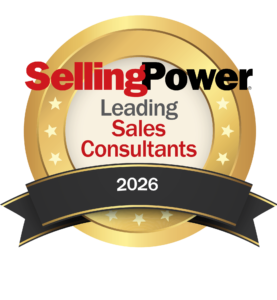Seven Ways CMOs Can Drive Sales Enablement’s Effectiveness

Sales is often looked to as a key driver of meeting an organization’s commercial goals, especially in the presence of economic headwinds. One of the most critical strategies of effective sales is sales enablement, which empowers the sales team by delivering information, systems, processes, and activities needed to meet the business’s broader commercial goals. It requires collaboration among different stakeholders, especially marketing and sales, on an ongoing basis to create a consistent, cross-channel customer experience.
Several activities come under the scope of sales enablement. However, marketing plays a vital role in two key activities – content creation and supporting training activities on topics such as product positioning and customer insights.
CMOs and their marketing teams, no matter their budget, can utilize a framework of seven elements that allow them to boost sales enablement’s effectiveness and drive revenue growth.
Element One: Leadership Collaboration
The most fundamental element of a sales enablement program’s success is cross-functional collaboration among organizational leadership – particularly in sales and marketing. Without it, sales enablement often fails to evolve beyond repetitive delivery of low-impact content and training to drive lasting behavior change.
It is especially important for the involved stakeholders to establish a shared understanding of business objectives. This can take the form of a mission statement or council charter that clearly outlines the roles and responsibilities of each function and the metrics that will be used to track success.
Element Two: Insights
Sales enablement requires customer and market insights to help sales reps effectively tailor communications and interactions to the buyer’s context. Buyers today allocate much of their buying process time conducting independent research prior to completing a purchase, either online or by seeking the opinion of their peers. To engage with buyers in highly relevant ways amid a competitive information marketplace, sellers must be well informed of customer objectives and pain points during the customer journey.
Given that marketing is well positioned to understand the pulse of the market and macro-level customer insights, marketers play a crucial role in bringing indispensable insights to sales enablement activities. As with other activities, cross-functional collaboration to source insights is critical. The shared insights brought to the table by both marketing and sales provide a more comprehensive view of the customers’ needs and behaviors.
Element Three: Co-Create Content
Often when marketing simply creates content within a silo and passes that content to sales teams without their input or without offering strategic direction, they run the risk of sellers not using that content to its full potential.
Therefore, the optimal approach is to co-create a sales enablement content strategy between both teams. CMOs should help in creating sales enablement assets that empower the sales team to deliver the right information to the buyers based on their buying journey needs, drive consensus among the buying group, and help customers navigate organizational change.
Element Four: Technology
Another problem sales representatives often face is an overwhelming amount of content and not enough time to sift through everything at their disposal. This absence of an established system of organization sometimes leads to confusion and lost opportunities of delivering the right content to customers at the right moment.
CMOs should look to adopt technology such as revenue enablement platforms that provide content repositories, authoring tools, collaborative environments, and interfaces for publishing, versioning, and presenting enablement content. These applications help marketing teams distribute essential seller-facing and customer-facing materials to sales representatives and improve engagement with prospects. Revenue enablement platforms also offer capabilities for training and coaching and can be leveraged across a range of customer-facing roles (e.g., customer success), not just traditional sales reps.
Artificial intelligence (AI) has also become a core capability of many vendors – the most common form being predictive sales content. The system recommends content options, drawing from a historical baseline of content that has been used effectively in previous deals. CMOs should actively collaborate with sales leadership to evaluate, select, and deploy revenue enablement platform technologies as well as the proper AI use cases.
Element Five: Assessment
Experienced CMOs will acknowledge that flashy metrics on dashboards do not always equate to tangible business results or accolades from the sales teams. A closed feedback loop with the sales team is needed to drive the sales enablement program engine by gauging if training is being utilized and content is relevant to drive commercial outcomes.
To assess the effectiveness and impact of the sales enablement program, CMOs should establish a framework for assessing content effectiveness. This includes quantitative metrics for measuring content access (such as views and downloads) and qualitative feedback for assets (such as ratings and reviews) that are made available to sales teams, partners, and customers.
CMOs should also partner with marketing analytics teams to build or buy the right solution for measuring sales and buyer enablement content’s effectiveness and their correlation to sales outcomes.
Elements Six and Seven: Behaviors and Activities
Many sales enablement initiatives struggle to achieve their long-term objectives because of insufficient investment in initiatives intended to drive lasting behavior change. Therefore, CMOs must partner with the sales team to develop new processes and communication techniques that equip sellers with the training and content needed to support the sales enablement framework.
Examples include embedding sales enablement materials into a seller’s existing workflow, gathering feedback on existing sales enablement tools, and motivating sellers to adopt the changes by demonstrating how the initiative will help free up time for higher-value work or support faster quota attainment.
In addition, single, one-time training activities are not as effective at improving sales performance, so Gartner recommends pivoting toward providing structured reinforcement within a continuous learning environment. As one example, transition away from the traditional one-off training events to small, digestible, 20- to 30-minute weekly or biweekly sessions that are tailored to different working environments.
Effective sales enablement strategies are key to unlocking and accelerating revenue growth. It is a distinct capability that requires concerted efforts from CMOs to boost seller performance and achieve business’s broader commercial goals. If CMOs follow this framework with content creation and supporting training activities in mind, they can ultimately optimize sales enablement for customer acquisition and retention.
Get our Enewsletter
Get the latest sales leadership insight, strategies, and best practices delivered weekly to your inbox.
Sign up NOW →